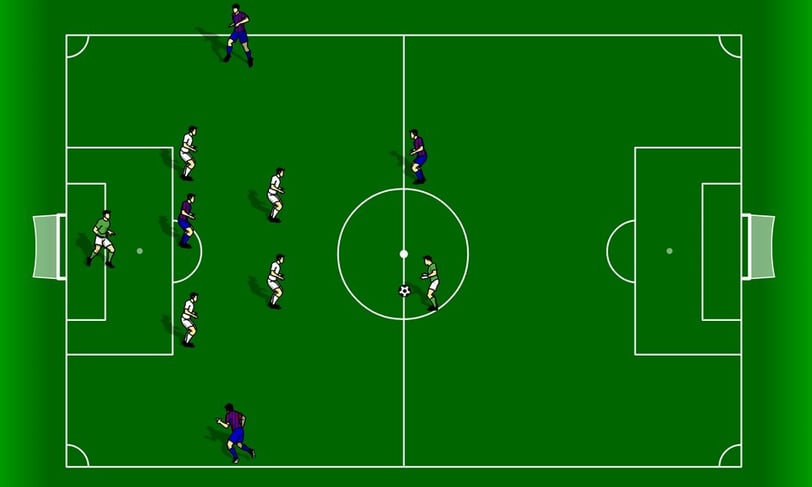Read football & basketball articles and other sports only at Finessekick.com
The Numbering System in Football Positions: What Casual Fans Might Not Know
Football, known as soccer in some parts of the world, is a sport rich in history and tradition. One of the lesser-known aspects of the game is the numbering system used to identify player positions on the field. While many fans are familiar with the basic numbers, such as the iconic number 10 worn by playmakers, the full range of positional numbers and their historical significance often go unnoticed. This article delves into the intricacies of football's numbering system, exploring the roles associated with each number and their evolution over time.
FOOTBALL
A. Sahrul Romadhon
12/14/20243 min read


The Traditional Numbering System
1 - Goalkeeper
The number 1 jersey is universally reserved for the goalkeeper. This player is the last line of defense and is responsible for preventing the opposing team from scoring.
2 - Right Back
The number 2 is typically assigned to the right back, a defender positioned on the right side of the field. This player is tasked with stopping attacks from the left-wingers of the opposing team.
3 - Left Back
The number 3 jersey is worn by the left back, who plays a similar role to the right back but on the opposite side of the field.
4 - Center Back
The number 4 is often given to a center back, one of the central defenders responsible for protecting the goal and marking the opposing team's strikers.
5 - Center Back
The number 5 is also commonly worn by a center back, partnering with the number 4 to form the core of the defense.
6 - Defensive Midfielder
The number 6 is traditionally assigned to a defensive midfielder, a player who shields the defense and breaks up the opposition's attacks.
7 - Right Winger
The number 7 is typically worn by a right winger, an attacking player who operates on the right flank and is known for their speed and dribbling skills.
8 - Central Midfielder
The number 8 is given to a central midfielder, a versatile player who contributes both defensively and offensively, often acting as the team's engine.
9 - Striker
The number 9 is synonymous with the striker, the primary goal-scorer of the team. This player is positioned closest to the opponent's goal and is responsible for finishing scoring opportunities.
10 - Playmaker
The number 10 is one of the most revered numbers in football, typically worn by the team's playmaker. This player is the creative force, orchestrating attacks and providing assists.
11 - Left Winger
The number 11 is assigned to the left winger, an attacking player who operates on the left side of the field, mirroring the role of the right winger.
Modern Variations and Tactical Flexibility
While the traditional numbering system provides a clear framework, modern football has seen increased tactical flexibility, leading to variations in numbering. For example, some teams may use different numbers for wing-backs, attacking midfielders, or even false nines. Additionally, squad numbers have become more personalized, with players often choosing numbers based on personal preference or superstition.
Conclusion
The numbering system in football is a fascinating aspect of the sport that reflects both tradition and tactical evolution. Understanding the roles associated with each number provides deeper insight into the game's strategic complexities. While the traditional numbers remain iconic, modern football continues to adapt and innovate, adding new layers to this age-old system.
FAQs
Q: Why is the number 10 jersey so special in football? A: The number 10 jersey is often worn by the team's playmaker, a creative and influential player who orchestrates attacks and provides assists. Many legendary players, such as Pelé, Diego Maradona, and Lionel Messi, have worn the number 10.
Q: Can players choose their own numbers in modern football? A: Yes, in modern football, players often have the freedom to choose their own squad numbers, which can be based on personal preference, superstition, or to honor a previous player.
Q: Are there any rules about which numbers players can wear? A: While there are no strict rules, certain competitions and leagues may have guidelines regarding squad numbers. Traditionally, numbers 1-11 are associated with specific positions, but players can choose other numbers as well.
Q: What is a false nine in football? A: A false nine is a tactical variation where a player, typically wearing the number 9, drops deeper into the midfield rather than playing as a traditional striker. This creates space and confusion for the opposing defenders.
Also Read : Technology Behind the Ball: How Technological Advancements Influence Modern Football
FinesseKick.com
Discover the latest articles about the world of sports.
Know More
Contact
© 2024. All rights reserved.
